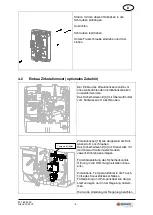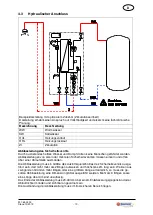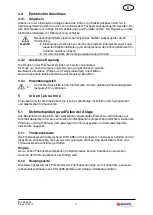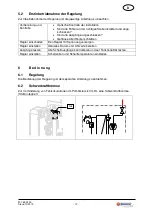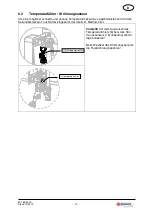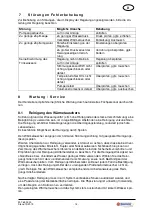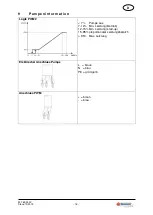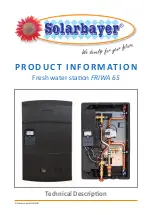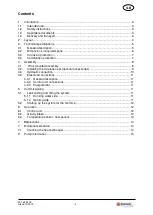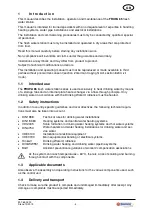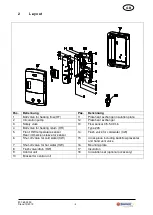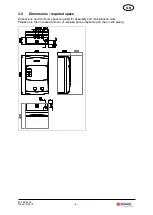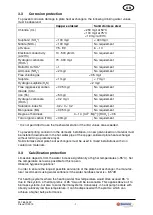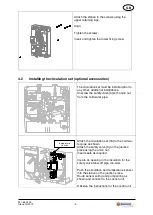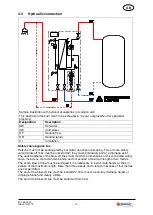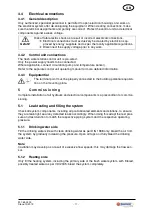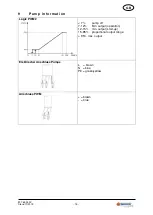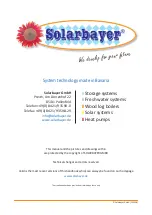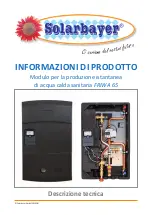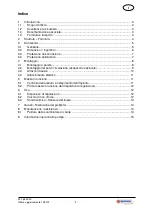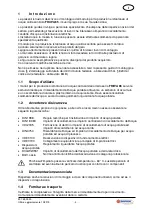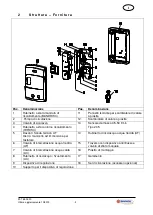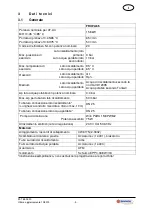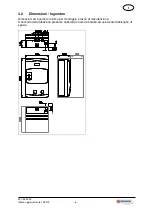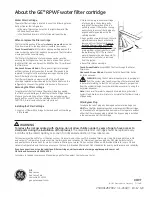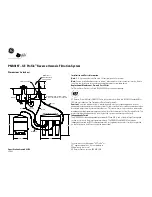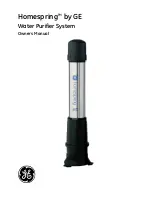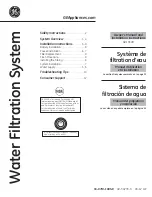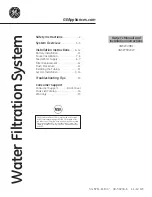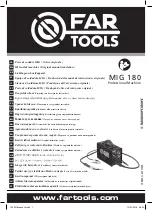
907.65.02.00
Stand 10/2019
- 7 -
GB
3.3
Corrosion protection
To prevent corrosion damage to plate heat exchangers, the following drinking water values
must be observed:
Copper-soldered
Solid stainless steel
Chloride
1
(CL
-
)
< 250 mg/l at 50°C
< 100 mg/l at 75°C
< 10 mg/l at 90°C
Sulphate
1
(SO
4
2-
)
< 100 mg/l
< 400 mg/l
Nitrate (NO3-)
< 100 mg/l
No requirement
pH value
7,5 - 9,0
6
–
10
Electrical conductivity
(at 20°C)
10 - 500 µS/cm
No requirement
Hydrogen carbonate
(HCO
3
-
)
70 - 300 mg/l
No requirement
Ratio HCO
3
-
/SO
4
2-
> 1
No requirement
Ammonia (NH
4
+
)
< 2 mg/l
No requirement
Free chlorine gas
< 0,5 mg/l
Sulphite
< 1 mg/l
< 7 mg/l
Hydrogen sulphide (H
2
S)
< 2 mg/l
Free (aggressive) carbon
dioxide (CO
2
)
< 0,05 mg/l
No requirement
Iron (Fe)
< 5 mg/l
No requirement
Hydrogen carbonate
(HCO
3
-
)
< 0,2 mg/l
No requirement
Saturation index SI
-0,2 < 0 < 0,2
No requirement
Manganese (Mn)
< 0,05 mg/l
No requirement
Degree of hardness
4
–
14 [Ca
2+
; Mg
2+
]/ [HCO
3
-
] < 0,5
Total organic carbon (TOC) < 30mg/l
No requirement
1
It is not permitted to use the fresh water station if the limit values are exceeded.
To prevent pitting corrosion in the domestic installation, no new galvanised iron material must
be installed downstream in the hot water pipe of the copper-soldered plate heat exchanger
without forming a protective layer.
Solid stainless steel plate heat exchangers must be used in mixed installations with zinc-
coated iron materials.
3.4
Calcification protection
Limescale deposits from the water increase significantly at higher temperatures (>55°C). Set
the temperature as low as possible for this reason.
Observe hygiene regulations!
In order to ensure the longest possible service life of the plate heat exchanger, the manufac-
turer recommends using water softeners if the water hardness level is > 8.5°dH.
For heating systems where the heating water flow temperature would often exceed 65 °C
due to the system, a thermal premix of 65 °C would be reasonable. This applies above all to
biomass systems, but also to solar thermal systems. Conversely, in heat pump heaters with
already relatively low flow temperature, it can be dispensed with the premix, which can
achieve a higher bulk performance.

